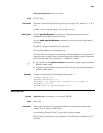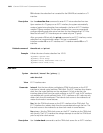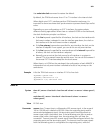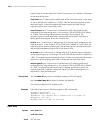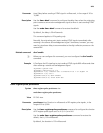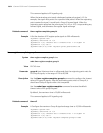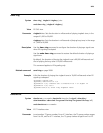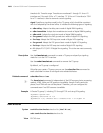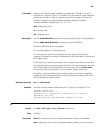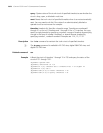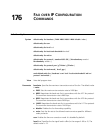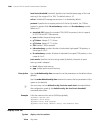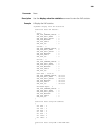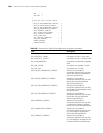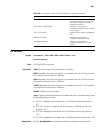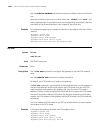
2677
Parameter timeslots-list: Timeslot range. Timeslots are numbered 1 through 31 on an E1
interface and 1 through 24 on a T1 interface. You may specify a single timeslot by
specifying a number, a range of timeslots by specifying a range in the form of
number1-number2, or several discrete timeslots by specifying number1,
number2-number3. Examples are 1-14, 15, 17-31.
dual: Bidirectional trunk.
in: Incoming trunk.
out: Outgoing trunk.
Description Use the
trunk-direction command to configure the R2 signal trunking direction.
Use the undo trunk-direction command to restore the default.
By default, bidirectional trunking applies.
This command applies to R2 signaling only.
An incoming trunk carries incoming calls but not outgoing calls while the
outgoing trunk does the contrary. A bidirectional trunk carries both incoming calls
and outgoing calls.
For R2 signaling to operate normally for call connection, you need to ensure that
the trunking mode is incoming at one end of the trunk and outgoing at the other
end. If both ends are using bidirectional trunking mode, use the select-mode
command to tune trunking policy. This is to prevent timeslot contention.
In addition, avoid using bidirectional trunking mode at one end and outgoing
mode at the other end, because this can lead to failures of outgoing calls at the
end in bidirectional trunking mode.
Related command: cas and select-mode.
Example # Set the trunking mode to bidirectional for TS group 5 on interface E1 1/0.
<Sysname> system-view
[Sysname] controller e1 1/0
[Sysname-e1 1/0] timeslot-set 5 timeslot-list 1-31 signal r2
[Sysname-e1 1/0] cas 5
[Sysname-cas1/0:5] trunk-direction timeslots 1-31 dual
ts
Syntax ts { block | open | query | reset } timeslots timeslots-list
View CAS view
Parameter block: Blocks the trunk circuit of specified timeslots to make it unavailable.
open: Opens the trunk circuit of specified timeslots, allowing it to carry services.



